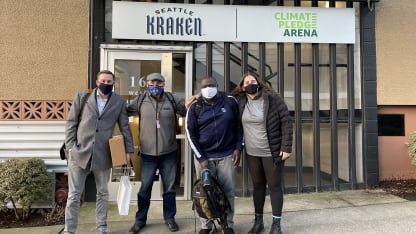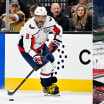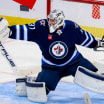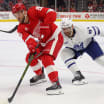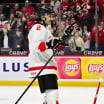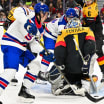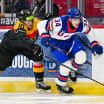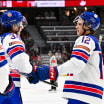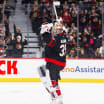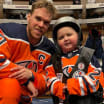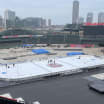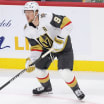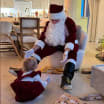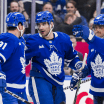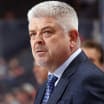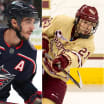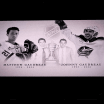Kraken digging deep to add Seattle flavor to in-game entertainment
NHL expansion team looks beyond staples for goal horn, mascot, music
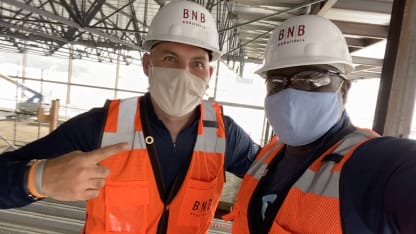
The hockey operations staff is doing it ahead of the 2021 NHL Expansion Draft on July 21. So is the game presentation staff -- wait, make that the "Entertainment Experience and Production" staff -- ahead of the Kraken's debut at Climate Pledge Arena in 2021-22.
What music do they play and when? What do they use for the goal horn? What creature becomes their mascot?
To answer each question, they ask another:
Why?
"What we wanted to do with all of our processes was to be thoughtful in it," said Jonny Greco, senior vice president of game presentation and live entertainment. "'OK, why? If you're going to do that goal horn, why?' … We're going to be relentless in trying to give the fans the best 'why' for everything we do."
"There's always a 'why,' " said Lamont Buford, vice president of game presentation.
The
CEO of the Kraken is Tod Leiweke
, who has emphasized authenticity, sense of place and fan experience over his long career in professional sports.
Leiweke can't take credit for everything under his leadership when the Minnesota Wild launched as an NHL expansion team in 2000-01, the Seattle Seahawks became a top NFL franchise in the mid-2000s, the Seattle Sounders launched as an MLS expansion team in 2009 and the Tampa Bay Lightning became a top NHL franchise after that.
But the following highlights are no coincidence and provide clues as to what's coming with the Kraken, the NHL's 32nd team: The Wild made a replica of a famous Minnesota lighthouse so they could shine the light and sound the foghorn when they scored. The Seahawks reignited their tradition of the "12s," or the "12th Man," and had a real hawk lead them out of the tunnel. The Sounders and their supporters became known for the "March to the Match" and chants. The Lightning installed Tesla coils in the rafters to flash real lightning.
It's also no coincidence that the Kraken hired Greco from the Vegas Golden Knights, who made their games a uniquely Vegas experience when they launched as an NHL expansion team in 2017-18. Greco also has worked for the New York Rangers and Columbus Blue Jackets, Buford for the Arizona Coyotes and St. Louis Blues.
Greco and Buford can play with the nautical theme of the Kraken, a mythic sea monster, quintessentially Seattle, while drawing from everything else the city and the surrounding region has to offer.
"The whole foundation of what we're trying to do in Seattle, it's Tod's line, right?" Greco said. "He goes, 'Our fans should be able to walk into our building, close their eyes and smell, taste, touch, hear and be like, 'Oh, this is Seattle hockey.' And so, the minute we got here -- not just for mascot, for everything -- it was, like, research and learn, and taste the flavors, see the sights, smell the smells and just talk to absolutely everyone here."
Buford arrived in Seattle in July, Greco in September. They haven't worked together in person much due to the coronavirus pandemic, but they have done things like grab a coffee at Pike Place Market, ride the ferry to Bainbridge Island and walk the grounds of Seattle Center, the campus that includes the Space Needle and Climate Pledge Arena. They haven't been able to go to Seattle sporting events, but they have been able to talk to people -- if not in person, then on the phone or via video conference.
The list includes their owners, who have extensive ties to Seattle; their colleagues at the Seahawks, the Sounders and the Seattle Mariners of MLB; Kevin Calabro, the former voice of the Seattle SuperSonics of the NBA, the beloved team that left for Oklahoma City in 2008; Detlef Schrempf, the former Sonics forward; the people at Seattle Center, the Space Needle, KEXP public radio, the National Nordic Museum … You name it.
"I was excited to talk to them," said Ryan Madayag, the Seahawks director of game entertainment and special events, who grew up in the Seattle area and has spoken to them about five times. "I think one of the big things about being in Seattle is, we really help our partners out, our community."
The goal is to look beyond the stereotypical Seattle stuff and find what resonates with the people who will sit in the seats: the locals.
"They're fine with coffee and the Space Needle and the ferry and Pike Market," Greco said. "Like, that's fine. … Like, 'Hey, look. We're in Seattle! Here's the four things, and we're going to play Nirvana too! That's what Seattle is, right?' Those things have to influence some of what we do.
"But for real Seattleites, for real Pacific Northwesterners, they're like, 'You've got to go deeper. You've got to go wider. You've got to get a little bit more like … 'Oh, you know this person? They started playing at the coffee shop on the corner.' "
Madayag is a Kraken season-ticket holder. A resident of the Queen Anne neighborhood of Seattle, he'll be able to walk with his family to go to games at Climate Pledge Arena.
"I know they're going to do a great job," Madayag said. "There's already a huge fan base for the Kraken. I'll be in there too, yelling. We're excited to see some hockey."
* * * * *
In professional sports, game presentation people review game film to evaluate their performances much like coaches and players do. They write reports. What worked? What didn't work? What can be done better next time?
Greco learned that during a stint at World Wrestling Entertainment.
"At the time, it felt very monotonous," Greco said. "Like, are we really writing this again? But then every once in a while, in the middle of the night, Vince McMahon would write you, just you, and say, 'Hey, Jonny, like, what happened at the sixth match when this happened?' Because I didn't put it in the report. I'm like, 'Is this guy really reading these things at 3 in the morning?' And he is. And I was like, 'Man, that is a level of granularity of greatness that is rare.' "
Greco and Buford have gotten granular by getting game film from their colleagues at the other Seattle pro sports teams. They've listened to the PA announcers, hosts and DJs. They've looked at the fans and noted key interactions. They've seen the camera shake.
In a word, what is Seattle sports?
"Loud," Madayag said. "It's a celebration. It's a celebration of the community to come together. In Seattle, we feel like we're the underdogs at times. We feel like a lot of the country really doesn't see and feel us, so we try to be as loud as possible."
Greco and Buford are taking nothing for granted, not even a simple, staple NHL chant. In places like Dallas, New Jersey and Vegas, the announcer will say, "The [local team is] on the …" The fans will shout, "Power play!"
"Lamont and I are like, 'It's pretty fun to give fans something to say, but does that play in Seattle? I don't think so,' " Greco said.
Well, turns out that at Seahawks games, the announcer will say, "That's another Seattle Seahawks …" The fans will shout, "First down!" At Sounders games, the announcer will say the position and first name during player intros. The fans will shout the last name.
"There's a precondition through this crowd base that illuminates some opportunities we have," Greco said. "There's a million ways to create an environment, but we don't want to just say, 'Hey, you know what worked in Arizona? Let's do it here.' "
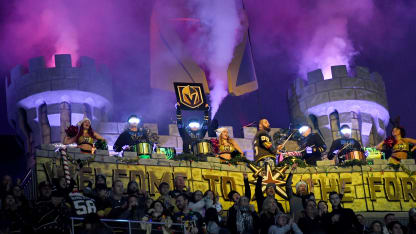
© Ethan Miller/Getty Images
A bit can be tailored to a town, though. When Greco worked in New York, the Rangers started using a video prompting cheers from fans from certain groups, like boroughs. In Vegas, a variation of it was a hit. The final prompts were for "tourists" and "locals." The locals roared.
"People love to be like, 'I'm that! I'm this!' " Greco said. "I would be shocked if something like that doesn't make its way into Seattle, but we got to figure it out. 'Do you like salmon sushi or tuna sushi?' "
Greco laughed. Imagine prompting fans of Washington and Washington State.
"They're very prideful here about their region, about their area," Buford said. "We just know something like that will resonate well here."
Music is a key part of game presentation, especially in city with a rich history like Seattle. Climate Pledge Arena is steps from KEXP and the Museum of Pop Culture, or MoPOP, which features exhibits on Seattle artists Jimi Hendrix, Nirvana and Pearl Jam.
The Seahawks' philosophy is diversity. They use at least three DJs at each game, each with a unique style, and hold a music meeting on the Thursday before a Sunday game to discuss strategy.
"There's a lot of just preplanning and a lot of scripted stuff, but as you know, it's based on how the game goes," Madayag said. "We have defensive songs and offensive songs and situational music ready to go."
The Kraken are still developing their philosophy, let alone their playlist.
"Do you play all Nirvana music? No," Greco said. "But we were looking back at Arizona and Vegas, like, how many tracks we played. It averages about 250 tracks, like snippets of tracks, whatever. People are like, 'What song are you guys going to play?' We're going to play over 200. There's plenty of room for that. Kenny G's from here too. He's going to make an appearance."
In the NHL, a handful of songs become synonymous with your brand. As Buford said, "That's how you know you are at a Seattle Kraken game." There's what you play when you take the ice, when you score, when you take a penalty and when your opponent takes a penalty. Greco brought up "Man in the Box" by Alice in Chains, a Seattle band.
"Every team has used that song before, but holy cow, that would make sense for us now," Greco said. "So, do you go right on the nose like that, are you like, 'No, we're not, because everybody's done that'?"
Then there is perhaps the most important sonic element in hockey: the goal horn.
What sounds like Seattle?
Greco and Buford don't want to reveal their secrets, but Buford dropped a hint.
"We can say we we're still trying to find that exact sound, but we think we know what the fans want," Buford said. "And you can go back to when the brand was announced and the excitement that fans had from hearing the sounds within that video. Those are things that helped us move in the direction that we're going."
Tomorrow, the 32nd Franchise Comes to Life
Greco and Buford don't want to make final decisions on music and sounds until they can hear everything inside Climate Pledge Arena, which is under construction and scheduled to open in September.
But going through this process while the arena is being built is an advantage, because they can ask the contractor to build around their ideas in certain cases, and this arena will provide unique opportunities because of its setting and architecture.
The arena is in a park, perfect for outdoor activities. The bowl is subterranean, perfect for a potential submarine theme. The roof is historic, part of the original arena built for the 1962 World's Fair and preserved when a new one was built underneath it.
"[The Kraken are] making sure that we highlight that and highlight the buttresses that hold up the roof," Greco said. "We'd be remiss to not acknowledge that heavily in our show."
There will be no center-hung scoreboard, like in most arenas. There will be two screens, which they call "the twins," one at each end. That means there will be nothing separating the fans on either side of the bowl, creating a more intimate environment. It also means the Kraken can have one screen interact with the other.
"It's like that borderline of being fascinated and terrified of programming like that, because you're like, 'Wait, you can put something there, and then put it there? How does that make the crowd respond?' " Greco said.
The north end is full of glass.
"That is a massive activation space for us," Greco said. "It's just an opportunity there, right? It's just too big, too beautiful, to not do something with that. So, we'll lean into kind of the natural beautiful architecture that's already there."
Whatever the Kraken do, they will keep watching game film, keep writing reports, keep evaluating and keep trying new things. The product opening night will not be the finished product. The product is never finished.
"You want to be excellent that first game, but you want to be excellenter Game 2 and Game 3," Greco said. "Get it to a level where we're proud and we did our best, but you're hoping by Game 10, by Game 20, by Season 3, it's like, 'Man, this thing just keeps evolving. Like, we don't want to stop wherever we land."
* * * * *
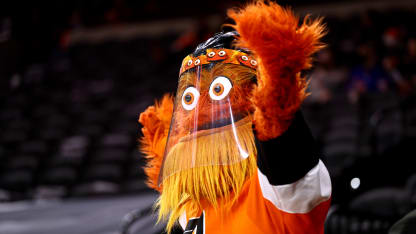
© Icon Sportswire/Getty Images
The development of the mascot is a microcosm of the whole process.
"I don't want to compare what we're doing with the mascot to what our hockey operations team is doing in trying to draft the right players," Buford said. "But we are trying to draft the right character that represents this brand the right way."
Greco said the Kraken are in their final selection process after doing a crazy amount of research on mascots in the local area, in the NHL and across sports. What made Gritty such a hit for the Philadelphia Flyers? What's secret to the success of the San Diego Chicken? If the Phoenix Suns' mascot can be a gorilla, does the Kraken mascot need to be an octopus or a squid?
"Again, you go to your 'why'?" Greco said. "Why have a mascot? We met with experts and other mascots from around the League and an internal faction of mascot people and just talked about what matters. It needs to be Pacific Northwest-relevant. It needs to create joy and hope.
"We talked to a lot of kids, and kids were like, 'A mascot should be joyful.' And it's just like, 'Yeah, that's probably the best answer ever, right?' If you're down 7-0, I'm going to be a lot happier if a mascot comes up and gives us a high five. 'Oh, let's take a picture.' Don't lose sight of just the simplicity of the joy and the smiles that we create."
That's what it's all about in game presentation, and that's why Greco and Buford call the members of their team "smile-makers," "experience-makers" and "storytellers."
"Let's grow the game," Greco said. "Let's grow hockey. Let's get more people included and let them realize just how freaking awesome this game is. If you haven't seen it, you don't know it, and if it takes, like, a really cool promo team or a ridiculous mascot or whatever to help get you in, then let's limit the barriers, get you in and then you'll realize this is the coolest game ever if you're here live and can see it.
"So, let's do that, man. Let's grow it."
